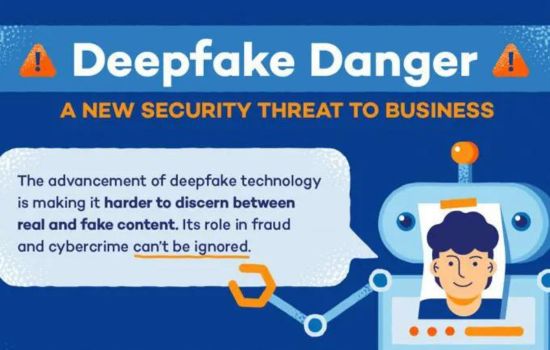The digital landscape has grown more complex in the age of fast technological innovation, presenting both opportunities and problems. The spread of deep fake content is one of these issues that have drawn a lot of attention. Artificial intelligence-driven deepfake technology makes it possible to produce incredibly lifelike phony audio or video recordings that are frequently indistinguishable from actual content. These works can sway public opinion, disseminate false information, and erode confidence in authorities and the media.
Table of Contents
Fake content:
One of the biggest names in the digital space, Google, has adopted a proactive approach by limiting the advertising of deepfake content on its platforms, realizing the serious consequences of this type of content. Google’s dedication to creating a digital ecosystem based on authenticity, integrity, and trust is demonstrated by this action.
The term “deep fake”:
The words “deep learning” and “fake” were combined to create the term “deep fake.” Deep learning is a branch of artificial intelligence that teaches neural networks to identify patterns and forecast future outcomes using massive volumes of data. This technology is used by deep fake algorithms to analyze and edit audiovisual data, allowing them to smoothly superimpose one person’s face onto another or change their speech. Because the outcome is frequently convincing, viewers may find distinguishing between authentic and fake content difficult.
Deep fake’s ramifications:
Deep fake technology has considerably more consequences than just being interesting or innovative. We’ve seen in recent years how destructive it can be on several fronts, including politics and personal relationships. Deep fake films can manipulate remarks, manufacture speeches, and show people participating in videos that use deep fakes have the ability toucan patterns, change statements, and show people doing things they have never done. Such manipulations have the potential to be used for harassment, slander, or political advantage, with disastrous results for both the targeted person and society at large.

Limiting the advancement:
Google’s proactive measures to reduce these dangers include limiting the marketing of deep fake content. The business’s choice is in line with its larger initiatives to thwart false information and protect the credibility of its platforms. Google has always understood the need to create a secure and dependable online environment where people can interact with content and obtain trustworthy information without worrying about deception or manipulation. Restricting deepfake content is not without its difficulties, though. Since the technology underlying deep fakes is always changing, creating reliable detection methods is challenging. Furthermore, it might be difficult to tell the difference between benign parody and malevolent purpose, necessitating close examination of both context and intent.
Multi pronged strategy:
Google has a multi pronged strategy that blends human monitoring with computer algorithms to address these issues. Automated systems scan text for unusual or suspicious patterns, highlighting potentially hazardous materials for further inspection. After that, human reviewers evaluate the information that has been identified, considering several aspects like context, intent, and possible consequences. Google can better balance human judgment with automation with this hybrid method, which increases the efficacy of its content moderation efforts.

In addition, Google works with academic researchers, industry partners, and governments to stay ahead of emerging dangers and provide effective solutions. Google hopes to use the combined knowledge and resources of its ecosystem’s participants to combat deepfake material.
Google’s efforts:
Although praiseworthy, Google’s efforts to limit the propagation of deepfake content are only one aspect of the problem. In order to effectively address the underlying causes of disinformation, stakeholders from all facets of the digital world must be involved in the process. Building resilience against the spread of false information requires innovation in technology, media literacy, and education.
When we come across content online, it is our duty as consumers to assess it critically and apply caution before disseminating or magnifying it. We can all work together to lessen the impact of false information and protect the integrity of our digital conversation by fostering a culture of skepticism and inquiry.
Conclusion:
Google’s move to prohibit the promotion of deepfake content is a reflection of its dedication to maintaining online safety and digital integrity. Google wants to improve trust and authenticity in the digital sphere by reducing the risks associated with deepfake technology through the use of technology, human expertise, and cooperative collaborations. But tackling the wider problems of disinformation calls for cooperation and constant attention from all parties involved. We cannot create a more reliable and robust digital ecosystem for future generations unless we collaborate.

